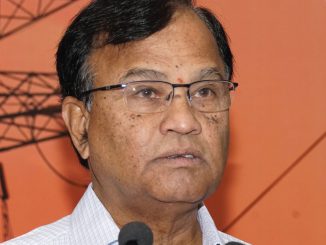Transmission Corporation of Telangana Limited (TSTransco), the country’s newest state transmission utility established in May 2014, is taking several initiatives to expand its network. These steps are key to ensuring timely evacuation of over 16 GW of capacity generation capacity coming up in the state by 2020.
As of March 2016, the transco had 17,490 ckt. km of transmission lines, 257 substations and over 40,000 MVA of transformation capacity. Of the total line length, 55 per cent was at the 132 kV level followed by lines at the 220 kV (33 per cent) and 400 kV (12 per cent) levels. Meanwhile, over 47 per cent of the total transformation capacity was at the 132 kV level.
Capacity addition
As per the Central Electricity Authority, in 2016-17, the utility added about 1,332 ckt. km of transmission lines and 1,750 MVA of transformation capacity at the 220 kV and above voltage levels. Notably, over 45 per cent of the lines and 56 per cent of the transformer capacity was added at the 400 kV level. Some of the key 400 kV lines that were commissioned during the year are the 240 ckt. km Suryapet-Nandiwanaparthi line, the 170 ckt. km Kamavarapukota-Suryapet line, and the 147 ckt. km Veltoor-Thungabhadra River. Further, two 400 kV 315 MVA transformers were commissioned at Dichpally and Narsapur.
Recently, in May 2017, TSTransco completed its longest 400 kV transmission line of 462 ckt. km interconnecting the Suryapet and Shankarpally substations in Rangareddy district, at a cost of Rs 5.58 billion. The transmission line was executed in several phases, and a part of it was commissioned in August 2016.
Operational performance
TSTransco’s transmission losses have recorded a mixed trend over the years. The losses reduced from 3.59 per cent in 2013-14 to 3.13 per cent in 2015-16, but increased to 3.37 per cent in 2016-17. The losses stood at 3.29 per cent as of April 2017. In its latest petition to the Telangana State Electricity Regulatory Commission (TSERC), TSTransco has projected transmission losses at 3.1 per cent and 3.09 per cent for 2017-18 and 2018-19 respectively, which have been approved by the commission.
TSTransco has also adopted state-of-the-art technologies for the transmission network in the state, which has increased system availability to 99.9 per cent. For instance, the utility is undertaking hot line works for the maintenance of lines and substations at 132 kV to 400 kV voltage levels. The transco deploys the hot stick method for the replacement of damaged insulators, tightening of bolts and nuts of jumpers, shoe clamps, tension clamps, etc. Besides, thermovision cameras are extensively deployed in the extra high tension switchyard to detect hotspots and take remedial actions.
Investment plans
TSTransco’s investment plans focus on the expansion and strengthening of the 400 kV network, and the development of transmission infrastructure for upcoming lift irrigation schemes in the state. The transco has estimated the power requirement for lift irrigation schemes in the state at 11,500 MW by 2020. For the first time, the transco has formed a separate wing headed by a director, to continuously monitor the progress of transmission works for the lift irrigation schemes.
As per TSERC’s latest tariff order, an investment of Rs 65.75 billion will be undertaken by TSTransco during 2017-18 and 2018-19. Of this, nearly Rs 50 billion will be spent on capital works in the current fiscal.
The key 400 kV transmission projects planned during the period include evacuation infrastructure for the 1,080 MW Bhadradri thermal power plant (TPP), the Kothagudem TPP Unit VII (800 MW), the 1,200 MW Adilabad TPP, the 1,600 MW Telangana Super Thermal Power Plant I and the 4,000 MW Yadadri TPP. Also, the 765 kV Wardha-Hyderabad transmission link scheme will be executed.
Overall, the utility intends to add about 4,638 ckt. km of transmission lines and 58 substations between 2017-18 and 2018-19. Given TSTransco’s achievements so far, the utility is poised to meet its targets and create a robust transmission network in the state.



